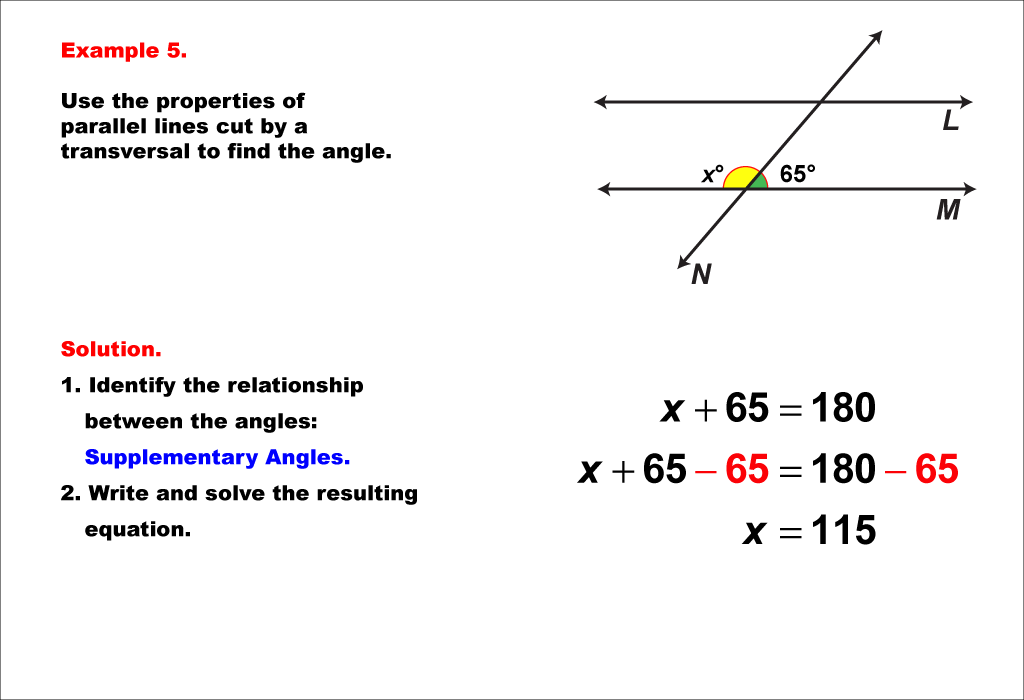
Display Title
Math Example--Solving Equations--Equations with Angles from Parallel Lines Cut by a Transversal--Example 5
Display Title

Topic
Equations
Description
This example continues the exploration of supplementary angles in parallel lines cut by a transversal. The diagram shows two parallel lines intersected by a transversal, with one angle measuring 65° and its supplementary angle labeled x°. As established in previous examples, supplementary angles sum to 180°. To solve for x, we set up the equation: 65 + x = 180. Subtracting 65 from both sides gives us x = 115. This example reinforces the consistent relationship between supplementary angles in parallel line configurations. It's important to note that this property applies to various angle pairs in this geometric setup, including corresponding angles and alternate exterior angles. By working through multiple examples with different angle measures, students can internalize these fundamental properties and apply them confidently in various geometric scenarios. The ability to translate these geometric relationships into algebraic equations is a crucial skill in mathematics, bridging the gap between geometry and algebra.
For a complete collection of math examples related to Equations of Parallel Lines click on this link: Math Examples: Equations of Parallel Lines Collection.
| Common Core Standards | CCSS.MATH.CONTENT.4.G.A.2, CCSS.MATH.CONTENT.8.G.A.5 |
|---|---|
| Grade Range | 4 - 8 |
| Curriculum Nodes |
Geometry • Points and Lines • Parallel Lines • Angles and Planes • Applications of Angles and Planes Algebra • Expressions, Equations, and Inequalities • Applications of Equations and Inequalities |
| Copyright Year | 2021 |
| Keywords | Parallel Lines Cut by a Transversal, parallel lines, transversal, vertical angles, supplementary angles, alternate interior angles, alternate exterior angles |